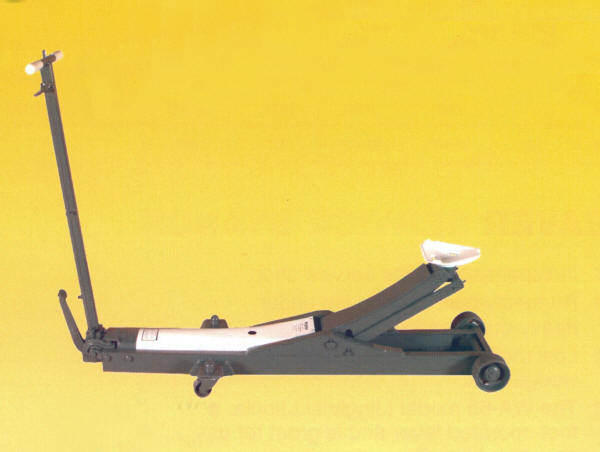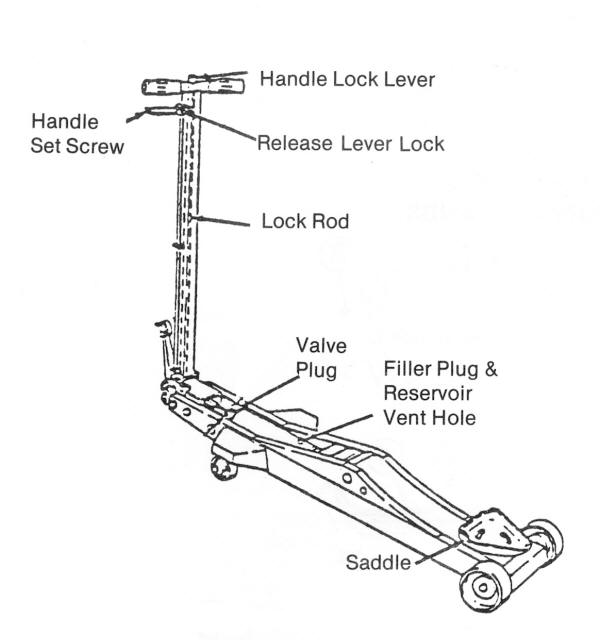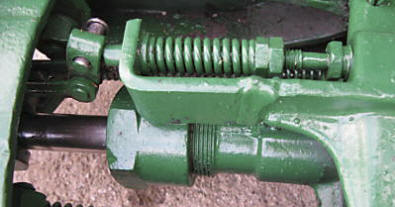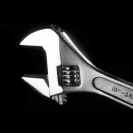- Alignment Tester
- Brake Tester
- Jack Stands
- High Service Stands
- Service Jacks
- Trailers - Closed & Open
 |
BBB Rating |
- Trailex
- Weaver Jack
- Weaver Safety Lanes
- Nationwide
- Direct Shipping

|
|
|
|
|
||
| 888-274-8490 |
 |
![]()
![]()
Operation and Service
Manual for Weaver Jacks
![]()

|

Weaver WA-73B Four (4) Ton Long Chassis
Hydraulic Service Jack
Weaver Jack Model Specifications
| MODEL |
CAP. (tons) |
FRONT WHEELS |
SADDLE STYLE AND SIZE |
FRAME LENGTH |
JACK WEIGHT |
| WA-72B | 2 | Two - 4" Diameter | Triangular or Round 5"' to 6" |
51" | 136 lbs |
| WA-73B | 4 | Two - 5" Diameter |
Triangular or Round 5" to 6" |
58" | 212 lbs |
| WA-75B | 10 | Two - 7" Diameter | Round 9" |
66" | 356 lbs |
| WA-85 | 20 | Three- 7" Diameter | Square 7" |
69" | 531 lbs |
If Your Jack Looks like a Weaver Jack, but it has a
different Manufacturers Label on it -
Some Manufacturers Private Label Weaver Jacks for sale under their Name -

|
Weaver Jack Operation For All Models Including:
To Assemble Your New Weaver Jack
1. Check the handle
set screw for tightness.
2. On the WA-85 20
Ton Jack only--Remove and discard the vent filler plug. This is very
important, as the vent hole must always be kept open so the Jack can
"breathe.”. The other models
have a breathable vent built into the cap.
3. Loosen the Piston
Ram and Pump Packing Nuts slightly.
They are tightened all the way down at the factory for shipment.
Tighten until no oil seeps out.
They only need to be moderately tight.
To Operate the Jack
WARNING:
Always use stands to support vehicle before attempting under vehicle
repairs or Inspections.
Always follow OSHA Workplace Safety standards.
1.
Use the Jack on a smooth, hard and level surface only.
Use the Jack only as a lifting device only.
2. Test the Jack by
using the foot pedal only to raise the saddle to full height without a
load. The pedal should
become very tight. If not,
check the oil level or see the troubleshooting section.
3. The Jack is easily
maneuvered by depressing the Handle Lock Lever until the lock rod
engages one of the two handle positions, and then pivoting the Jack on
Its rear casters.
4. Place the jack in
position so that the saddle will engage an approved lifting area of the
vehicle. The saddle is raised to the contact point by the foot pedal.
Lift the load using the long
handle – do not lift loads with the foot pedal alone.
On low clearance vehicles It Is
often advantageous to operate the foot pedal by hand while watches to
assure proper saddle contact. Surface on which Jack rests should be
fairly flat to prevent twisting of the frame. Load should be centered in
the saddle.
5. Pump with handle
for easy lifting. Do not attempt to raise the jack beyond It’s travel
stops.
6. To lower the load,
pull back gently on the release lever. Always
lower the load slowly.
7. Be certain that
area beneath vehicle is clear before lowering the vehicle. Always use
the release lever lock to prevent unintentional operation of the release
lever.
To Refill with Oil
Remove the filler
plug and with the saddle DOWN put InAW-32 Light Hydraulic Oil (or oil
that meets MIL•F•17111 011 specifications) until the level comes up to
within 1/4" to 3/8" below filler hole. Overfilling will cause oil to
spurt out the vent hole as the Jack Is lowered, or may' prevent jack
from lowering properly. Insufficient oil will cause the Jack to 11ft
only part way. Always be sure to put in oil only when the saddle is all
the way down. Be careful not to let any dirt get into the reservoir
while the Filler Plug Is out. Do
not use brake fluid, transmission fluid or any other fluids—doing so
could damage the seals and cause jack failure.
Overload Protection
The Lowering Valve
(Release Valve) is also designed to work as an overload protection
device. If you attempt to
raise a load that exceeds the jack’s rated capacity, this valve will
automatically release the cylinder pressure as an overload protection
safety feature.
Safety Precautions
Follow OSHA Standards
and ASME PALD Part 10 Instructions.
Never exceed the Jack’s rated load capacity.
Only lift vehicles at the recommended lift points found in the
vehicle’s service manual. Eye protection should be worn per OSHA
recommendations. Always use
the Jack on smooth, hard and level surfaces – while keeping the load
centered on the saddle.
Always check the Jack prior to each use – do not attempt to use the Jack
if any defect is observed.
Do not add accessories or modify the Jack in any way.
Always use Jack Stands under the vehicle and stay clear when
lifting or lowering the vehicle.
Preventive Maintenance
1. Inspect the jack
before each use. Take
corrective action before using the jack is a leak or defect is found.
2. Keep all working
parts thoroughly lubricated. Keep Jack clean.
Dirt is the major cause of Jack failure, and all openings should
be kept free of debris.
3. Packing nuts at
the piston and pump plunger should be kept moderately tight. These
Packings are NOT under high
pressure, and should only be tight enough to prevent leakage.
4. Keep oil filled to
within 1/4” to 3/8” of fill opening.
Replace oil at least once a year.
5. Ball Valve may be
removed for Inspection and cleaning by removing the Ball Chamber Plug
[V] and using a small magnet, remove the balls [X&Z] and the ball
weight[Y].
IMPORTANT:
Whenever it is necessary to loosen or remove the Ball Chamber Plug, the
Gasket [W] should be replaced with a new one. Oil leakage at this point
is usually caused by trying to reuse an old gasket over again.
To Relieve When Air-Bound
1.Should the oil
supply run too low, the Jack may become air-bound and work on only a
half stroke of the handle. Fill the jack with oil, and then raise the
saddle, and then using the Release Lever (lowering lever) lower the
saddle while holding the fool pedal depressed. This will flush out any
air in the system, and excess oil may then run out of the vent.
Repeat if necessary.
Be sure that the jack is properly filled with oil before putting
it back in service. Oil should cover the piston rod. If you cannot pump
the Jack Saddle to full height, raise the Saddle by hand and then
perform this operation
Ball Valve Test.
If the Jack will not
raise at all, then the Ball Valve may be obstructed by debris.
Open the Release Valve and keep it open.
Raise the Saddle lift arm manually to full height. Now lower the
Saddle by pushing it all the way down – this will flush out any debris
in the Ball Seats. Close the
release valve and try to pump up the Jack.
If it now will raise and hold, then the Ball Valve may need to be
serviced.
|
||||||||||||||||||||||||
 |
||||||||||||||||||||||||
| Release Valve Group (upper ) - Pump Assembly (lower) | ||||||||||||||||||||||||
| Release Group - Needle Valve Adjustment | ||||||||||||||||||||||||
| CLICK HERE FOR ADJUSTMENT INSTRUCTION DETAILS | ||||||||||||||||||||||||
| Seal Kits for Weaver Jacks are available from Castle Equipment Company.. TIP – It is best to order the complete kit initially, rather than order individual parts, as it usually turns out that you will need multiple, if not all the parts in the Kit. You will end up saving money, as individual part prices will exceed the kit cost, not to mention that you would incur additional shipping costs. |
 |
Print a Copy of This Operations & Service Manual CLICK HERE |

copyright 1997-2014
Castle Equipment Co.